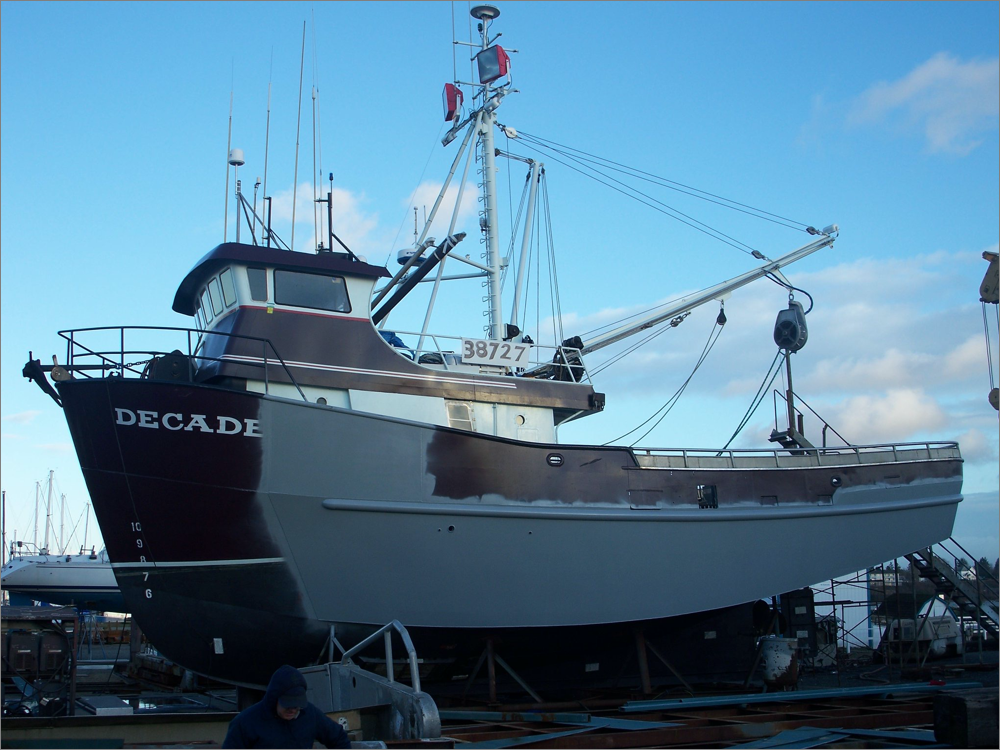Ketchikan, Alaska March 20-25, 1986 In a trial where memories — bad memories — were central, the pace of witness testimony loomed large. Mary Anne Henry told reporter Eric Thomas of the Bellingham Herald she planned to stagger the appearance of important witnesses so there would be “peaks and valleys” during the trial.
“Jurors are human beings,” she told Thomas. “They can’t take a lot of heavy stuff the first month or a lot of minor stuff at first and then the heavy stuff at the end.”

After the heavy testimony of Larry Demmert and his relentless assault by the defense, Henry did slow the pace. The morning after Demmert’s testimony, jurors toured the Libby 8 at a Ketchikan dock. Later that same day, jurors heard from three Petersburg fishermen, who testified about what they witnessed in the days surrounding the murders. Mostly they talked about seeing a shadowy figure on the Investor as she drifted away from her moorings.
But these fishermen were troubled witnesses. Not only did they have bad memories. Their recollection of the events was fragile and sometimes failed them. Take the example of Petersburg skipper Jeff Pfundt.
Bad Memories
Pfundt’s boat, the Sheila Ryan, was tied up near the Investor on the night of the murders. On the witness stand, he described feeling frustrated, because when troopers interviewed him in Petersburg, after the murders, something was missing from his memories.
“They were asking me all the questions and [I was] trying to remember anything that might have some bearing on the case,” he said. “And I remember leaving there and having a feeling that there was something. You know, I didn’t know what it was. But I did have that — have a feeling that there was something else that I might know.”
In the days following the murders, Pfundt was napping at home when he heard a nearby watchman taking target practice. That isolated event seemed to trigger a flood of memories.

Memories or Dreams?
“I started remembering things,” he said. He said he had awoken that fateful morning in Craig to the faint sound of voices raised as if in argument. “And I wasn’t sure that I heard anything. It was so faint… And my mind was saying, ‘you should do something. You should inquire, find out about this,’” he said. “And then I believe I heard shots. Six or eight shots. And then I believe I heard a scream and then more shots. It went on for quite a while.”
When Pfundt told his wife about it, she brushed it off, saying it was only a dream. Given the trauma of the Investor murders, it seemed possible. But the memories wouldn’t die and soon Pfundt called troopers to relate his story. To his mind, there was only one problem with his recollections.
“It seems that I would have done something. It seems that I would have, you know, that I should have woke the crew up or done something when I hear these things. That makes me think, well, maybe it was a dream… I also have other feelings that maybe I didn’t want to get involved. That I knew something horrible was happening and just didn’t want to get involved. That’s – I don’t know. But that’s a big question in my mind.”
Jeff Pfundt, Alaska v. Peel (Ketchikan, 1986)

No Memory At All
Clyde Curry, skipper of the Decade, felt even worse. Eight people were murdered less than 20 feet from where he slept. He had been too drunk to notice and too hung over to remember anything of substance. As Curry told a 1984 grand jury:
“Well, you know, at first when this first happened I searched my mind as best I could to try to find out, you know, anything that I knew, and then after that each day that goes by you’re going to know less and I didn’t feel like it was worth searching any more; because then you’re going to start making things up, it seems like to me, and that’s not going to help.”
Excerpts from the unpublished original manuscript, “Sailor Take Warning,” by Leland E. Hale. That manuscript, started in 1992 and based on court records from the Alaska State Archive, served as the basis for “What Happened in Craig.”
Copyright Leland E. Hale (2020). All rights reserved.

Order “What Happened In Craig,” HERE and HERE. True crime from Epicenter Press.